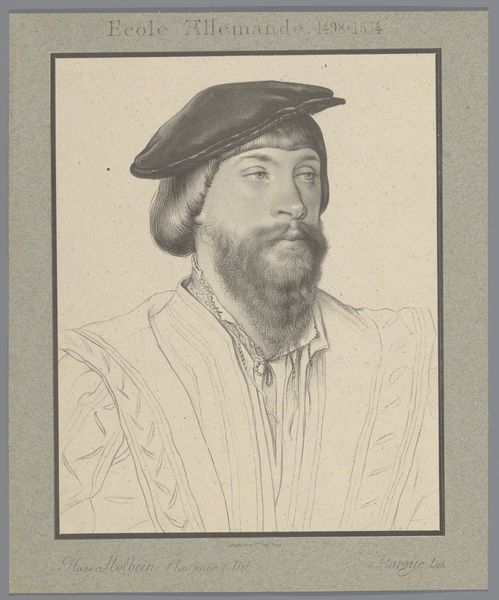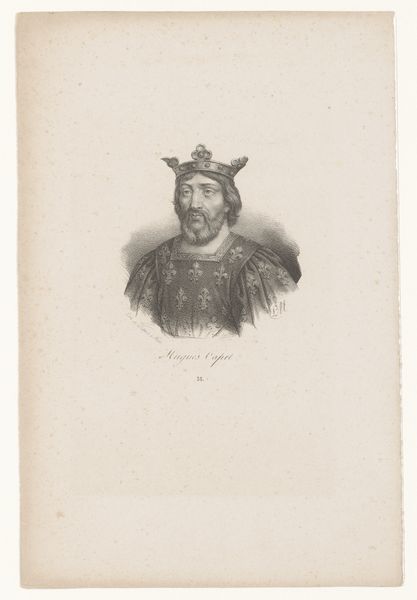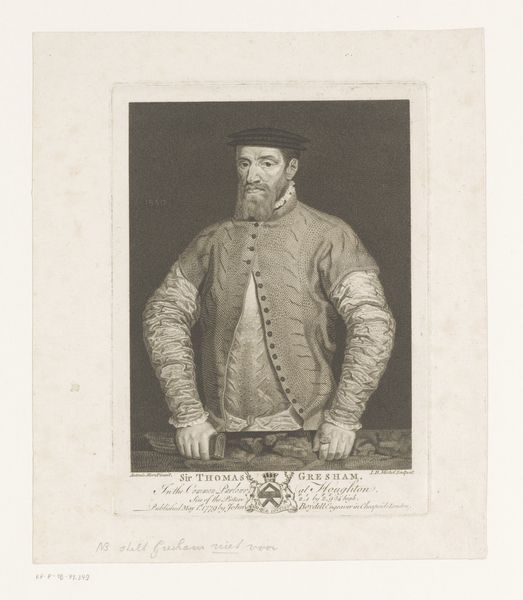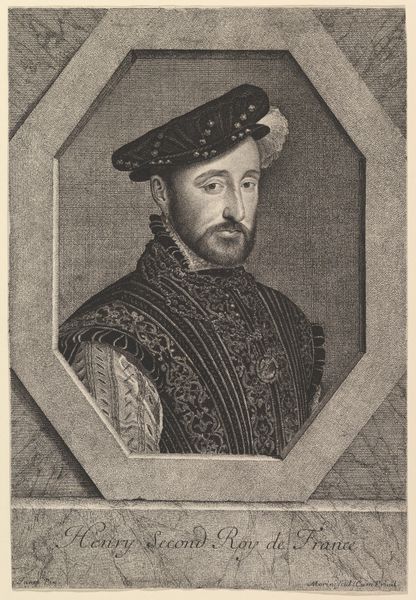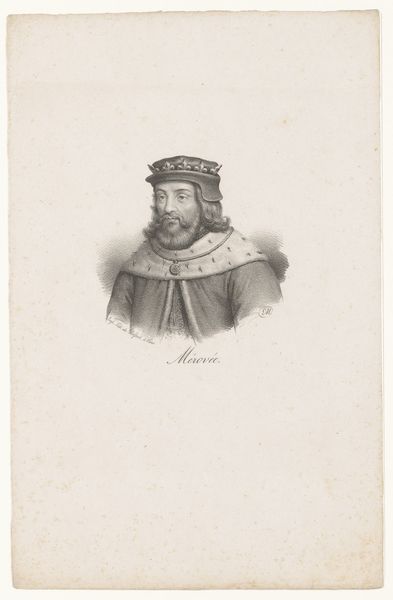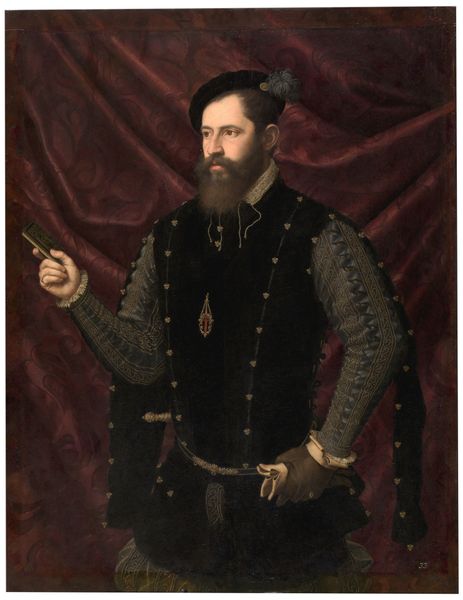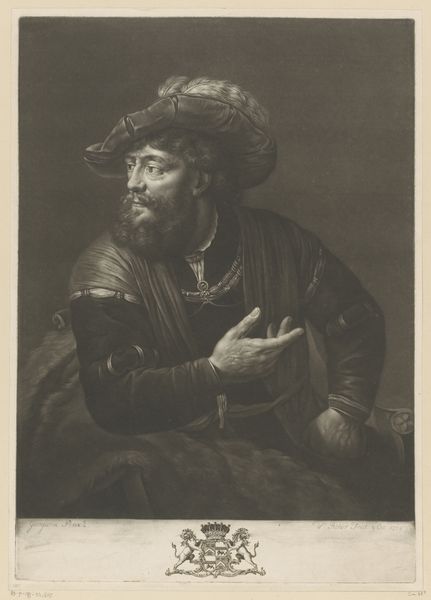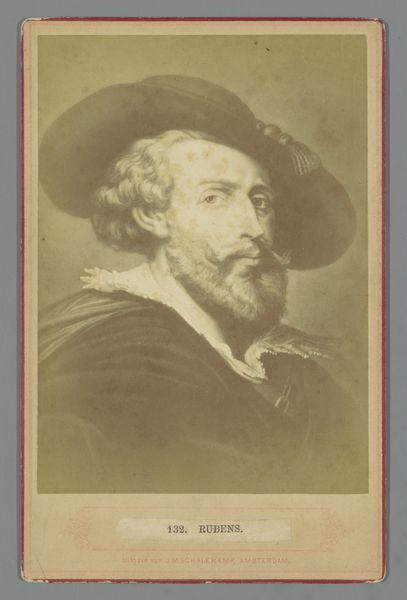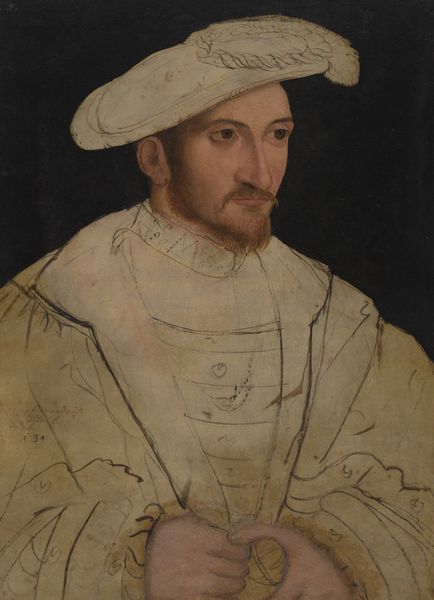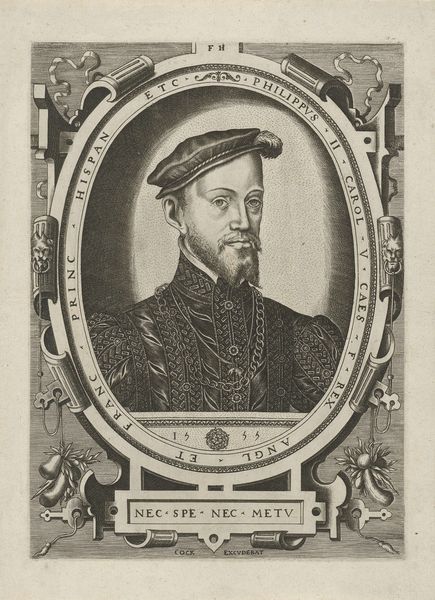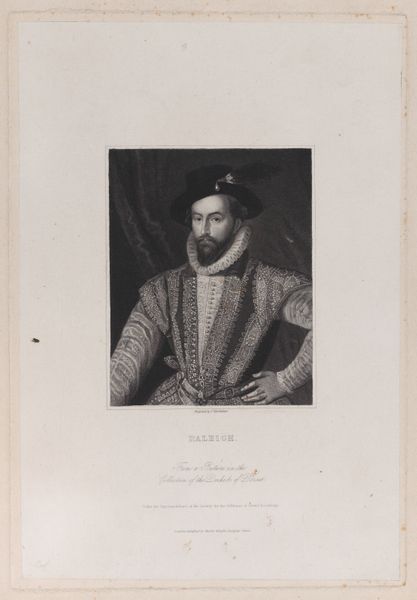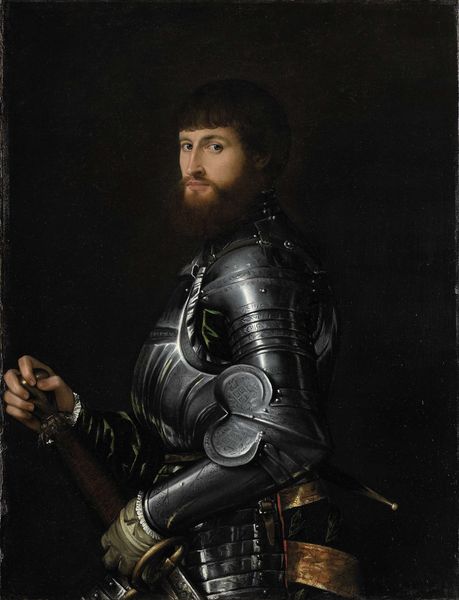
Fotoreproductie van een portret van Thomas Boleyn, graaf van Wiltshire, door Hans Holbein before 1877
0:00
0:00
anonymous
Rijksmuseum
drawing, paper
#
portrait
#
drawing
#
caricature
#
paper
#
11_renaissance
#
italian-renaissance
Dimensions: height 395 mm, width 287 mm
Copyright: Rijks Museum: Open Domain
Curator: Welcome. Here, we see "Fotoreproductie van een portret van Thomas Boleyn, graaf van Wiltshire, door Hans Holbein," which, as the title indicates, is a photostatic reproduction of Holbein’s drawing. It resides here at the Rijksmuseum and dates from before 1877. What strikes you? Editor: You know, that rust color gives it this haunting, almost dreamlike quality, doesn't it? It makes the Earl seem more like a phantom from history. The sparse lines are unnerving and intense at the same time. Curator: The linear quality is indeed pronounced. Holbein’s original drawing would have demonstrated keen observational skills, prioritizing line and form to capture likeness and convey status. Notice the emphasis on his garments, which reflect both his nobility and the sartorial codes of the time. Editor: Exactly! It's as if Holbein saw straight through the Earl's fancy clothes, capturing something vulnerable beneath that public facade. The sketch-like quality gives it a strange immediacy—we're not just seeing a lord, but a person, sketched as a side thought on someone's to-do list. Does that make sense? Curator: In a manner of speaking. The reductive nature of this photographic copy emphasizes Holbein's focus on contour. It strips away much of the original’s textural subtleties, creating a flatter image plane. Observe how the subject’s gaze, directed slightly off-center, adds to the overall sense of composed detachment. Editor: It really works. I'd call it poignant, that gaze. Makes you wonder about his life, the scandals he endured. All washed in that surreal sepia. It elevates what could have been another dusty portrait into something really potent. Curator: An astute reading, and one the reproductive process inadvertently amplifies. Through simplification, Holbein’s representational strategy achieves a different mode of aesthetic engagement, revealing the subject as simultaneously present and remote. Editor: A ghostly paradox—very cool. Now, I won’t just see Tudor costumes but feel the emotional undercurrents that churned through folks then. What a strange collision of drawing and photograph! Thanks for walking me through that. Curator: My pleasure. May this visit prompt continued appreciation of these transformative intersections.
Comments
No comments
Be the first to comment and join the conversation on the ultimate creative platform.

